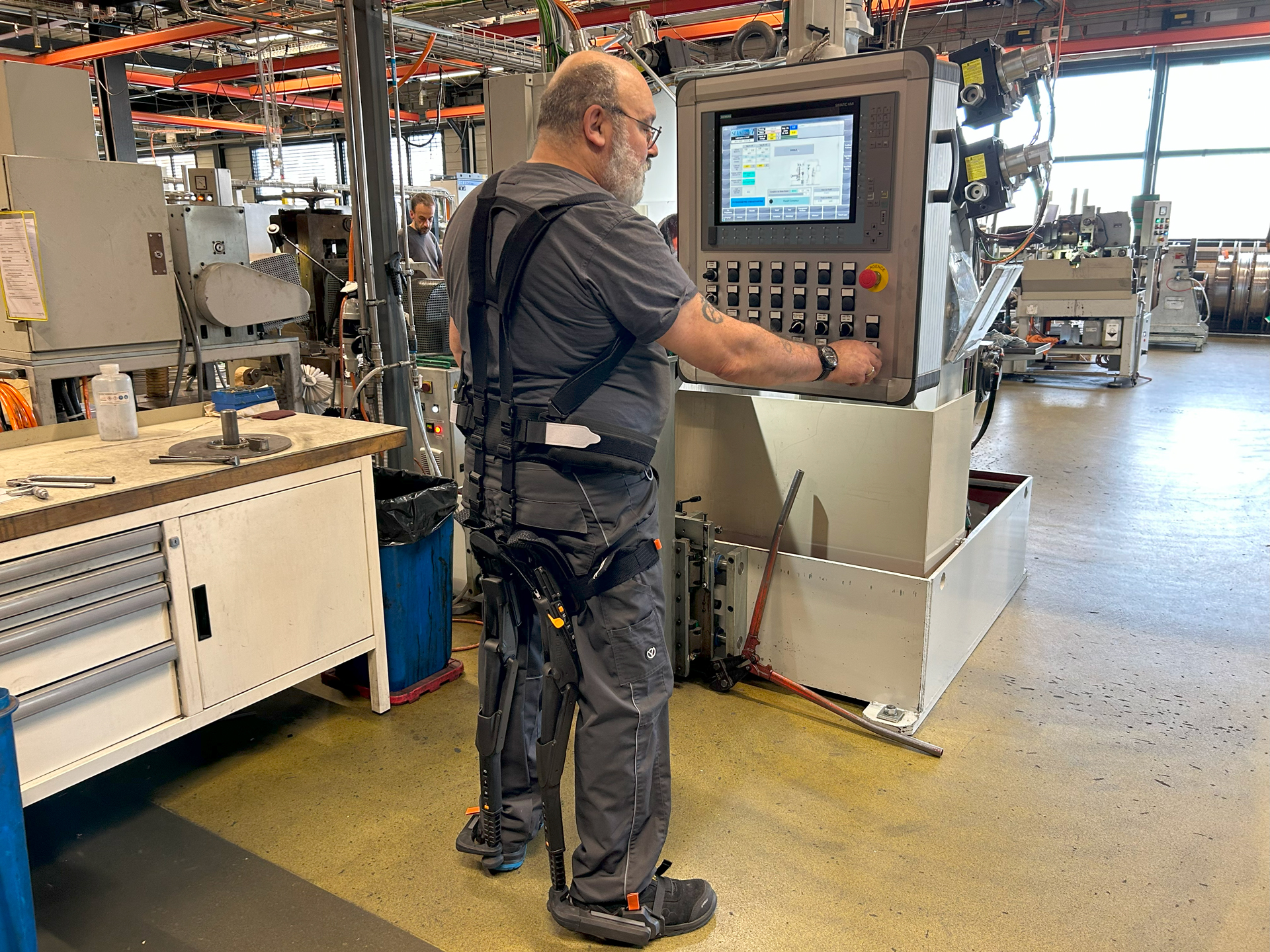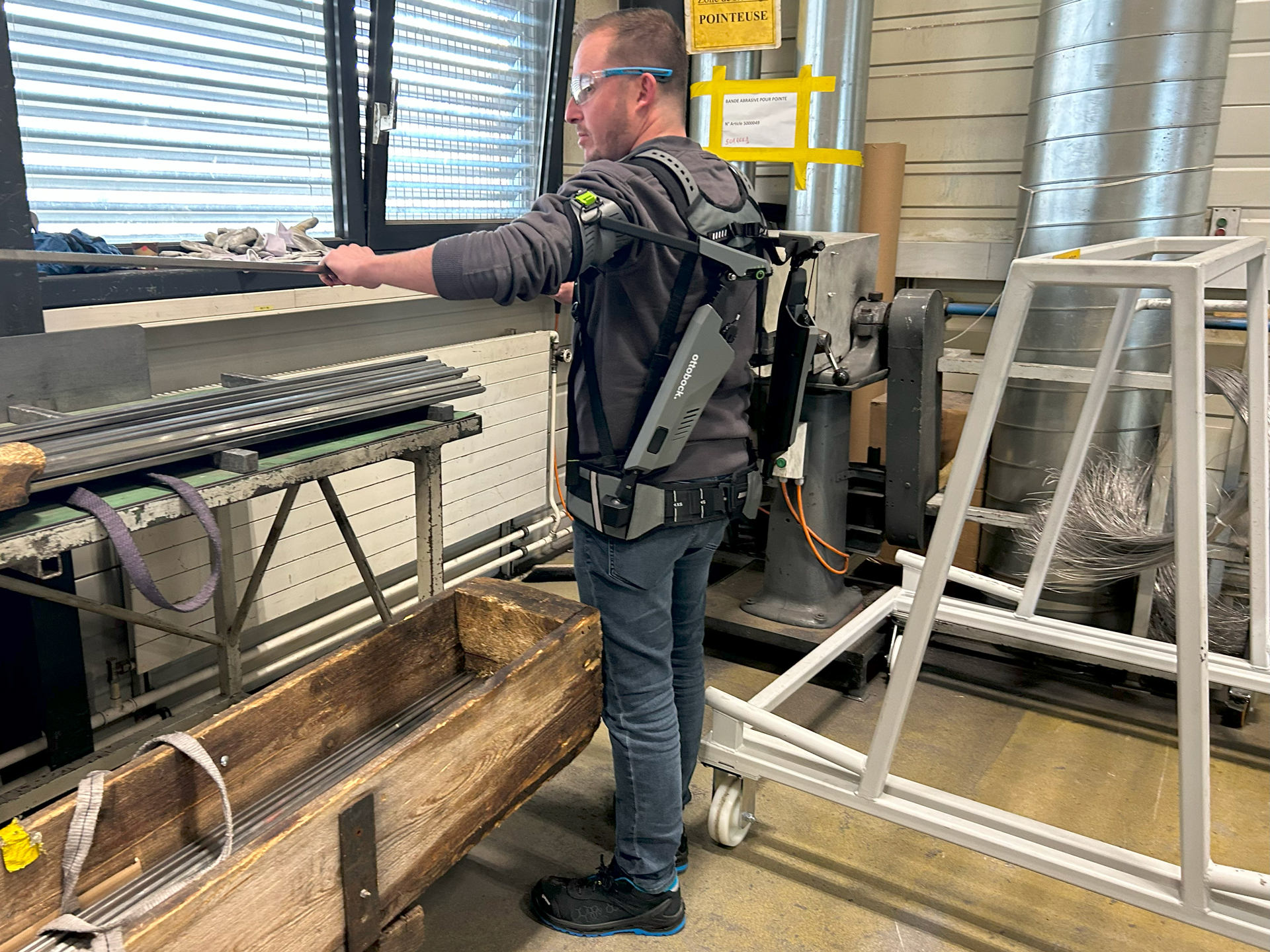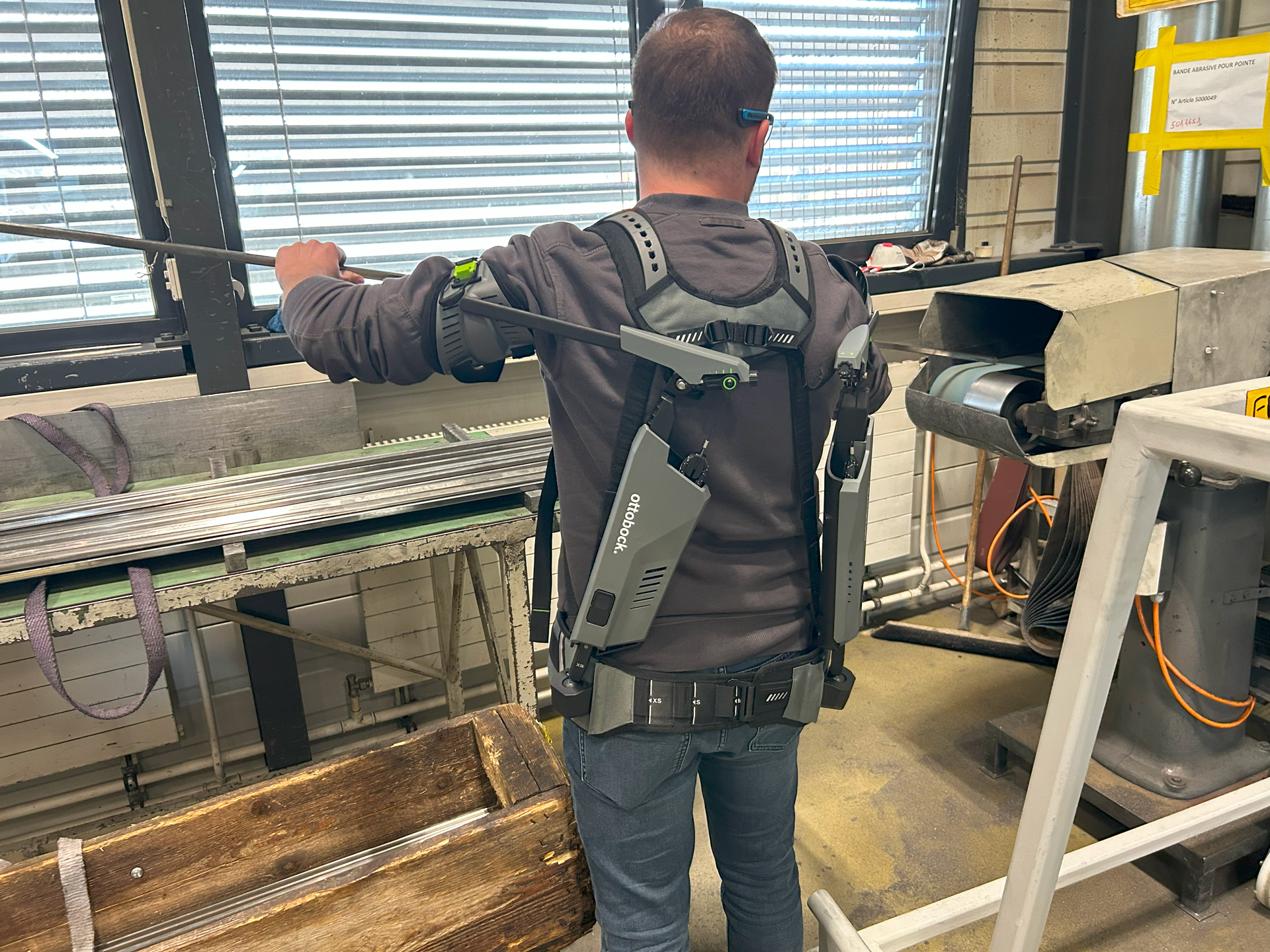Physical assistance exoskeletons are innovative mechanical structures designed to complement the human body, with the aim of relieving strain and optimising performance when performing physical tasks. These devices have a wide range of applications in both the industrial and healthcare sectors, particularly in handling and body support activities, as in the case of back exoskeletons.
The purpose of these technologies is to provide physical support to the individuals who use them, whether they are people with physical disabilities or workers subjected to intense physical loads. Their aim is not to cure, but to prevent muscle fatigue, reduce the risk of injury and facilitate repetitive or heavy movements.
PX Précimet SA is currently carrying out in-depth tests on these devices. The aim is to evaluate their effectiveness in a professional environment over several weeks, with the priority being risk prevention and improved health at work. In particular, these exoskeletons should lighten the efforts of operators in the production, handling and stock management sectors, by optimising their posture and reducing the physical constraints associated with these demanding tasks.
Characteristics of shoulder exoskeleton and expected results:


- Helps reduce shoulder, arm and neck fatigue for production workers.
- Practical, can be fitted without the help of a third party. Fully adjustable to the user’s personal build.
- Weighs just 1.9 kg and takes a little getting used to, but everyday use offers great freedom of movement.
- Exoskeletons help to improve the well-being and health of employees, particularly in terms of sick leave linked to physically demanding work. This type of initiative also enhances the attractiveness of the company and its ability to retain talent.
Characteristics of sit-stand exoskeleton and expected results:


These exoskeletons are used in all sectors where tasks require constant alternation between sitting and standing. Their field of application is vast, extending in particular to employees working on large sections, as well as those involved in operations such as order picking or packaging.
- A sit-stand exoskeleton supports employees’ bodies, enabling them to concentrate on their work, while reducing fatigue.
- Promotes healthy intervertebral discs
- Relieves strain on knees, legs and back
- Adapts to body sizes ranging from 1.60 m to 1.95 m and supports a maximum weight of 130 kg. It is also compatible with safety shoes.
- Weight: 5kg. Requires a slightly longer adaptation time than the shoulder exoskeleton, but the benefits are just as great.
Other devices currently undergoing testing at PX Précimet include waistcoats, abdominal belts and insoles, which also contribute to the well-being of workers and the prevention of occupational health risks.
At the end of the test phase, scheduled for the end of February 2025, the likely adoption of these devices by our internal employees should follow.

